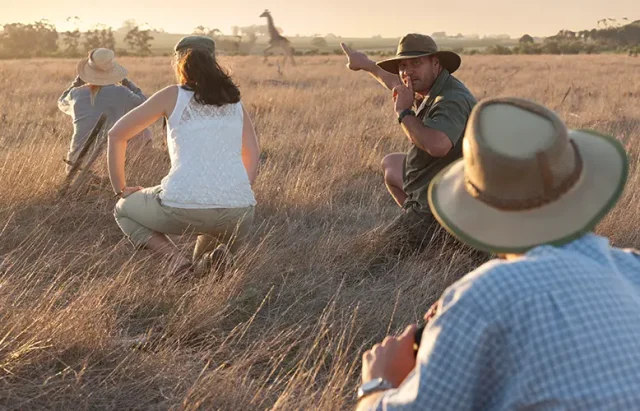
A safari in Africa is a dream adventure for many, offering the chance to experience wildlife up close, witness breathtaking landscapes, and immerse yourself in diverse cultures. But to ensure that your trip is as memorable and stress-free as possible, meticulous preparation is key. Whether you’re planning a safari in Kenya, Tanzania, or South Africa, here are the top 10 tips every first-time traveler needs to know.
1. Choose the Right Time for Your Safari
Understanding Safari Seasons
The timing of your safari can make or break your experience. African safari tours are heavily influenced by the seasons, particularly the dry and wet seasons. During the dry season (typically June to October), animals congregate around water sources, making them easier to spot. In contrast, the wet season (November to May) brings lush landscapes and fewer tourists, but the dense vegetation can make wildlife more challenging to see.
Best Months to Visit Key Destinations
For those keen on visiting Kenya or Tanzania, the best time to go is during the Great Migration from July to October, when millions of wildebeest and zebra cross the Serengeti and Maasai Mara. Meanwhile, South Africa’s Kruger National Park offers prime wildlife viewing from May to September, when animals are most active and visible. The team over at Sababu Safaris insists on carefully monitoring wildlife movement patterns to provide guests with the most rewarding safari experience possible. They also tailor itineraries based on seasonal changes, ensuring travelers witness the most spectacular animal encounters while enjoying comfortable and safe accommodations.
2. Pack Smart and Light
Essential Safari Gear
When packing for your safari, less is more. Opt for breathable, lightweight clothing in neutral colors like khaki or beige. These colors not only blend into the environment, minimizing your impact on the wildlife, but they also help you avoid attracting insects. Key essentials include comfortable walking shoes, a wide-brimmed hat, and polarized sunglasses for sun protection. Don’t forget a light jacket for cooler mornings and evenings.
What to Leave Behind
Leave flashy accessories and bright-colored clothes at home. They can attract insects and may be inappropriate for the natural settings you’ll encounter. In addition, refrain from bringing non-essential electronic devices that could distract from the experience.
Don’t Forget These Essentials
A good pair of binoculars can enhance your wildlife viewing experience, allowing you to see animals in detail from a safe distance. Sunscreen, insect repellent, and a refillable water bottle are must-haves, as the African sun can be intense, and bugs are a constant presence .
3. Protect Yourself from Insects and the Sun
Insect Protection and Malaria Prevention
Malaria is a concern in many African safari regions. Consult your doctor about antimalarial medication and ensure you’re up to date on vaccines like yellow fever, depending on your destination. Additionally, carry insect repellent with DEET and sleep under a mosquito net in areas prone to mosquitoes.
Sun Safety on Safari
Sun protection is vital. Pack high-SPF sunscreen, a wide-brimmed hat, and UV-blocking sunglasses to shield yourself from the sun’s powerful rays, especially during midday game drives when the heat is most intense.
4. Get Your Travel Documents in Order
Visas and Passport Requirements
Different African countries have different visa requirements. Kenya, Tanzania, and South Africa require most international visitors to obtain a visa before arrival. Ensure your passport has at least six months of validity beyond your travel date and enough blank pages for visa stamps.
Vaccinations and Health Precautions
Vaccinations such as yellow fever, hepatitis A, and typhoid may be required or recommended, depending on your safari destination. Research the health requirements well in advance and schedule any necessary vaccinations before your trip .
5. Prepare for the Wildlife Experience
Understanding the Big 5
The “Big 5”—lions, leopards, elephants, buffalo, and rhinos—are the stars of most safaris. Understanding their behavior will help you appreciate your encounters with these majestic animals even more. Keep in mind that while the Big 5 are a highlight, other incredible species like giraffes, zebras, and cheetahs also make for unforgettable sightings.
Patience and Respect for Wildlife
Wildlife encounters require patience. Safari vehicles may stop for extended periods to observe animals from a distance. Be respectful of their natural behaviors avoid loud noises and sudden movements that could disturb them .
6. Know the Local Customs and Etiquette
Respect for Local Cultures
When visiting local communities, like the Maasai in Kenya or the Himba in Namibia, show respect for their traditions and customs. Ask for permission before taking photographs, and be mindful of cultural sensitivities, especially regarding dress codes and local customs.
Tipping Guidelines
Tipping is an essential part of the safari experience. Guides, lodge staff, and drivers typically rely on tips as part of their income. A general rule is to tip $10-15 per day for guides and $5-10 per day for lodge staff .
7. Stay Safe in the Wilderness
Safety Rules on Safari
Always follow the guidance of your safari guides. Never leave the vehicle during game drives unless instructed to do so. Predators can be deceptively fast, and even herbivores like buffalo and elephants can be dangerous if provoked.
Camp Safety Tips
Around camps, avoid wandering off alone, especially at night. Many safari camps are unfenced, meaning wildlife can roam nearby. Stay in well-lit areas and avoid walking alone after dark.
8. Plan for Connectivity and Power
Managing Limited Connectivity
Many safari lodges are located in remote areas where internet access is limited or non-existent. Prepare to disconnect from the digital world and fully embrace the safari experience. Let loved ones know in advance that you may not be reachable at all times.
Bring Power Adapters and Battery Packs
Bring along universal power adapters and portable battery packs to charge your cameras and other devices. Safaris offer countless photo opportunities, and you don’t want to miss capturing the moment due to a dead battery.
9. Prepare for Early Morning and Late Afternoon Game Drives
The Best Times for Wildlife Viewing
Wildlife is most active during the early morning and late afternoon, when temperatures are cooler. Plan for early starts and be ready to head out just as the sun rises for the best chance of spotting animals at their most lively.
Dress in Layers
The temperature can fluctuate dramatically throughout the day, so it’s wise to dress in layers. Mornings and evenings can be quite chilly, but by midday, the heat can become intense. A light jacket or fleece will keep you comfortable.
10. Embrace the Unexpected
Be Flexible with Your Itinerary
Nature is unpredictable. Weather conditions, animal movements, or other unforeseen factors may disrupt your plans. Stay flexible and open to changes in your itinerary, as this often leads to the most unique experiences.
Enjoy the Unpredictability of Nature
One of the joys of a safari is that no two game drives are alike. Every day brings the possibility of witnessing something incredible, whether it’s a lioness on the hunt or a herd of elephants bathing at a waterhole. Expect the unexpected, and savor the moments as they come.
Conclusion
Planning a safari is an exciting adventure in itself. By following these tips and preparing thoroughly, you’ll ensure that your African safari is both safe and unforgettable. Whether you’re tracking the Big 5 in the Serengeti or marveling at the sunsets over the Maasai Mara, a well-prepared safari is the key to a once-in-a-lifetime experience. So pack smart, stay safe, and get ready for the adventure of a lifetime!





